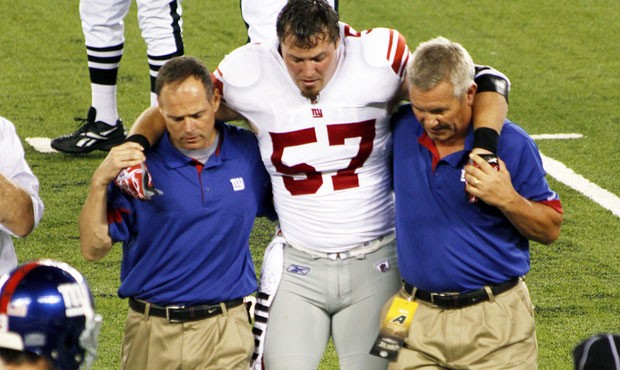Athletes playing through pain is a dangerous game
Dec 19, 2014, 2:17 AM | Updated: Jan 21, 2015, 6:49 pm

Some of sport’s most iconic moments involve hobbled athletes overcoming extreme pain.
Petra Majdic breaking five ribs and collapsing a lung just minutes before her qualifying heat in Vancouver 2010. She went on to win a bronze medal.
Tiger Woods winning the 2008 US Open despite a torn ACL or Peyton Manning returning from major neck surgery to complete a record setting year.
For professional athletes, pain is part of the job description. But for Weekend Warriors, pain should should never be the goal of any workout or activity.
A little soreness is expected after a tough workout. Soreness is the result of overloading the muscle to the point of recovery. Pain, on the other hand, will usually last more than a few days. It’s your body’s way of sending a message to rest while trying to heal.
Daniel Aschenbrener, MD, a physician with Banner Orthopedic Surgery Specialists, says an injury, whether it occurs on the field or off, may not always sideline an athlete. However, he cautions against ignoring the signs and symptoms of injury as doing so could ultimately take you out of the game for good. Instead, he says to listen to your body and respond accordingly.
Continuing to workout and exercise while the body is recovering from an injury is not a one-size fits all philosophy.
“In the past, it was generally recommended that athletes who suffer any sort of physical injury abstain from playing completely, usually for a prolonged period of time with immobilization to the injured part of the body,” Aschenbrener says. “While there are definitely times when that approach is still warranted, the general school of thought has shifted somewhat.”
Muscles heal in response to stress. Therefore, early exercise following a minor injury may help decrease swelling, stiffness and muscle weakness.
“Most minor injuries heal better with a little light exercise and stretching soon after injury,” according to Aschenbrener. “In fact, regularly stretching the tendons produces molecules in the body that help to naturally heal inflammation.
“Knowing what types of exercises are safe can be a challenge.”
Letting tendinitis go on for a few months builds scar tissue and makes your condition more difficult to heal. Early rehabilitation will help speed up the recovery process and prevent further damage.
Also keep in mind, your personal trainer might know how to exercise, but most likely has no formal training in rehabilitation.
Your safest bet is to see a physical therapist. In only a few visits, they can teach you about your injury, give instructions on how to modify your activities, provide a home exercise program and send you on your way.
Aschenbrener notes fractures and other more severe injuries may require casting, immobilization, injections or even surgery. Follow your doctor’s advice about how and when it is safe to return to play.
Recovery from an injury, even a minor one, doesn’t occur overnight. Be patient, modify your workout routine and always listen to your body.
If the pain continues or worsens, then medical intervention may be in your future.
Until then, walk it off and take a few baby steps.








